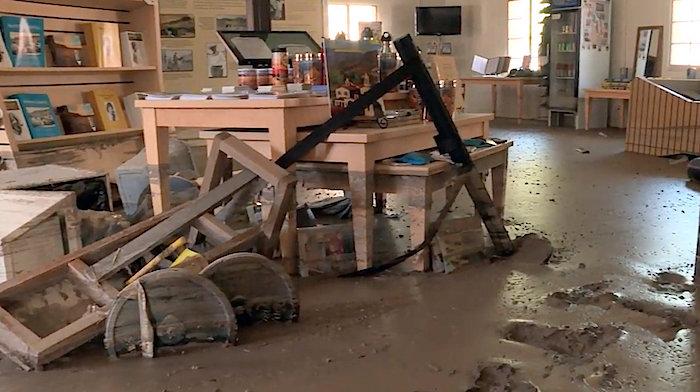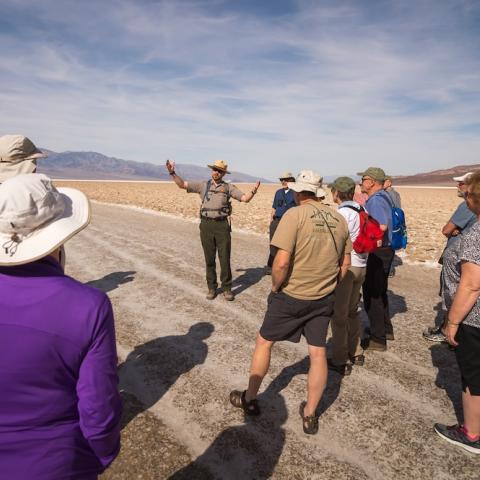
Nearly three years after an historic flood did major damage to Scotty's Castle and surrounding infrastructure, the Park Service received permits and some funding to begin some major repairs/Kurt Repanshek pre-flood photo
Nearly three years after historic flooding devastated Scotty's Castle in Death Valley National Park and its surrounding landscape, the National Park Service has received funding and permits to begin moving forward with some major restoration work.
The flood on October 18, 2015, uprooted utilities, swept away sections of roads, and flooding buildings at Scotty's Castle. The area has largely been closed to the public since then as cleanup and repairs are being done. Odds are, the full restoration won't be completed until the 2020 season, according to park staff.
“People ask why it’s taking so long,” said Abby Wines, the park's management assistant. “I don’t think they understand how much damage happened in the flood. We had many decisions to make about how to do the repairs. Scotty’s Castle is such a special historic place. It’s better to do this right than to do this fast.”
The Park Service brought in historic specialists, architects, and engineers to provide designs. For larger projects, the consultants provided several alternatives. Park Service staff then chose the preferred alternative by comparing their advantages.

Repairs to the Bonnie Clare Road in Death Valley should start this fall/NPS

The October 2015 flooding dumped mud and other debris in the visitor center at Scotty's Castle/NPS
At that point, the park incorporated the preferred designs into documents called Environmental Assessments that were available for review by the public, the State Historic Preservation Office, and others. This consultation is required by the National Environmental Policy Act.
The park has been given the green light for several projects that have cleared the review process. Contractors might start working on Bonnie Clare Road as soon as September. Work on Scotty’s Castle’s water system, sewer system, and electrical system should start later this fall.
The park has had recent good news about funding. Death Valley National Park received confirmation of $5,394,000 in funding to repair flood damage to Scotty’s Castle Visitor Center.
However, the visitor center project highlights why flood repairs are not as straightforward as they might sound. The Park Service proposes to widen a historic opening from 3 feet to 14 feet wide. This will allow future flooding to pass through the L-shaped building without backing up into the interior of the historic building. However, it would involve a significant change in the appearance of the historic building. The California State Historic Preservation Office has not issued a final determination yet.




 Support Essential Coverage of Essential Places
Support Essential Coverage of Essential Places






